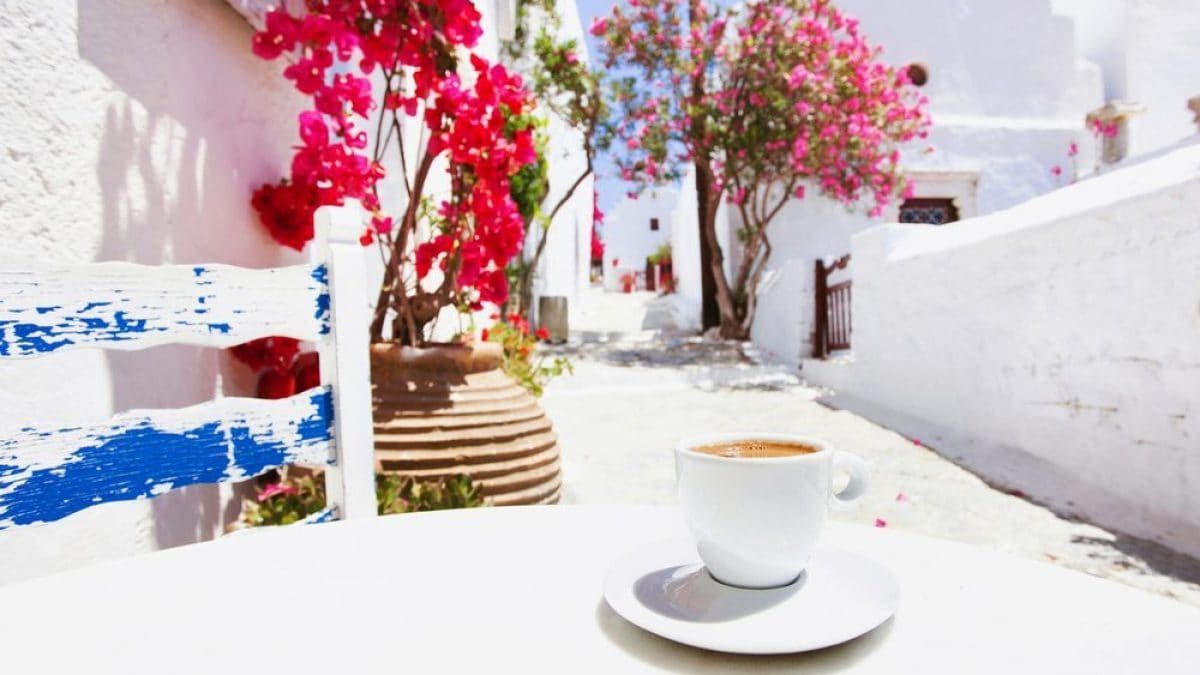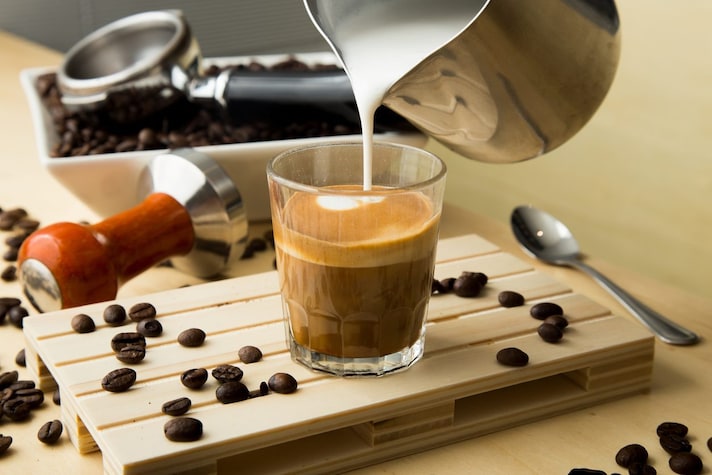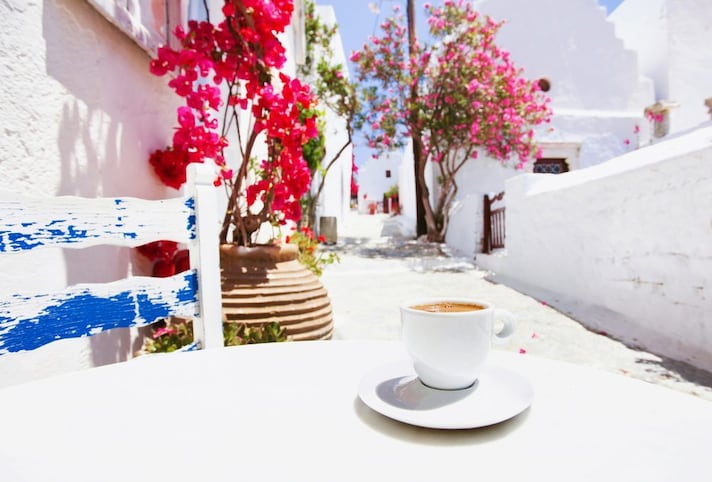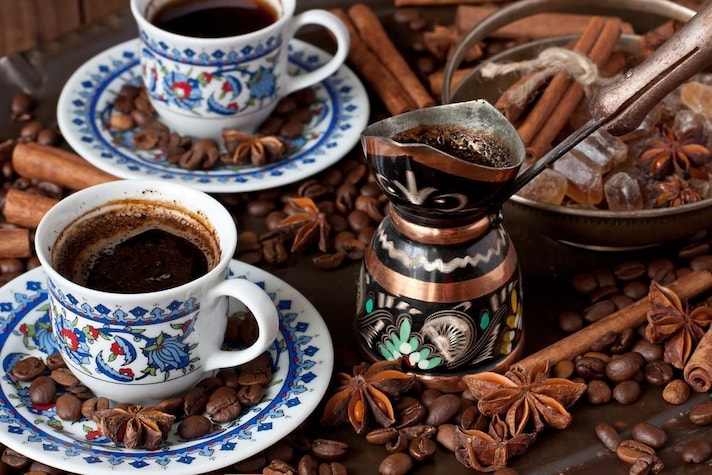
It's well known that for most people, coffee is more of a ritual than a beverage: it's drunk at home, prepared with a moka pot or pods in the morning before going out, or directly at a coffee shop, standing at the counter, and some even do both. When leaving for summer holidays or, more generally, when traveling abroad, the approach to the coffee shops of the "host countries" risks being conflicting: if even in Italy it's not as simple as it seems to sip a quality, full-bodied, and aromatic espresso, abroad the fear of disappointment increases, especially due to the risk of being lost in translation, with names and translations that can be confusing. Below, we'll look at how to order the classic cup (or what most closely resembles it), while also providing an overview of some local alternatives that can provide equally great satisfaction.
Espresso Coffee: How to Order It Abroad
Let's start with a premise. There are now numerous ways to drink the equivalent of espresso simply by using the term "espresso" thanks to a coffee culture that in recent years has been winning over countless enthusiasts around the world, from specialty coffees to artisanal roasters that are not exclusively made in Italy. What might pique your interest most are the ways in which it is consumed: in particular, you won't see anyone drinking it quickly at the counter, but rather calmly, during a break, perhaps accompanied by a slice of cake or a pastry.
France
“Un café, s'il vous plaît” is the formula used to ask for coffee in France. You can also opt for “un petit café,” “un café noir,” or “un café express.” It is, in theory, the equivalent of Italian espresso, but despite being served in a small cup, it is longer. If you prefer it concentrated, then go for the café serré, essentially the version of the ristretto. If you are used to a macchiato, then here is the café noisette for you, which sees the addition of a splash of milk, taking on a hazelnut color, hence the name. Café au lait, a true institution, is usually prepared with coffee filtered in a French press, to which abundant milk is added and poured into a large cup. Do you like decaffeinated? Don't say décaféiné, just “un déca,” always followed by “s'il vous plaît.”
Spain
In Spain, the most popular coffee is the café solo. As popular as our espresso, it is characterized by being longer, with the cup almost full. How do you order it? By saying “un café solo, por favor.” If you want it shorter, remember to specify muy corto and not cortado, a misleading word: the café cortado, in fact, is a variant of the macchiato, made with espresso and hot milk in equal parts, with a pleasantly creamy consistency.

Germany
In Germany, the term espresso has become part of the common vocabulary: there are many Italian-style bars and restaurants that prepare it as they do in their homeland, and Berlin is also home to trendy roasteries. Be careful, though, because even if you order an "ein Espresso," bitte (thank you), you might get what Germans commonly call a "Kaffee," a filter coffee similar to American coffee, a bit too watered down for standard Italian tastes. Among German-style coffees, the so-called "Pharisäer Kaffee" is particularly special , combining rum and whipped cream, a Northern Italian specialty. And don't worry about craving a cappuccino after 11:00 a.m.: if you want to experience the thrill, this is the place to do it—no one will judge you.
Portugal
For a coffee reminiscent of espresso, you could simply say café or café expresso, but if you're in Lisbon, along with a fragrant pastel de nata, order uma bica, por favor (a bica, please), while in Porto, um cimbalino. Both names are linked to the launch of espresso coffee on the market in the country between the early and mid-1900s. The first is said to be the acronym of the slogan of the bar that inaugurated it in the city, which read “beba isto com açucar” (drink it with sugar), as recommended by the baristas, as it is bitter and strong, while the second derives from the famous Italian coffee machine La Cimbali, which arrived in Portugal in the 1950s. In this case too, it is a full cup, with the drink less concentrated and creamy than ours.

The UK
In the homeland of tea, but now well-established with coffee as well, espresso is simply ordered as espresso (I would like an espresso, please or I'll have an espresso, please): you can ask for it single or double. Important: "Normal" coffee is called black coffee, and is filtered, usually served in large cups or mugs. Among coffee lovers, the long black, of Australian origin, stands out: it is similar to the Americano, but the espresso is poured over the water (and not vice versa), so it is less diluted and more aromatic.
Here, in The United States
Here, the most common coffee is filter coffee, also known as Americana, long and light, served in large cups or to go: we also see it in Breakfast at Tiffany's, held by Audrey Hepburn in front of the window of the iconic jewelry store. If you ask for "a coffee, please," that's what you'll receive. For an espresso, as in Great Britain, it's better to say "a single (or double) espresso," while among the most popular in coffee shops is the Americano: the famous espresso diluted with hot water. Due to the large chains, espresso becomes above all a base to be customized with cream, spices, and syrups, in hot or cold versions, with the aim of sweetening it.
Coffees to Taste Around the World
If you like to travel with an open mind and a cup in hand, then coffee can be an interesting way to discover the soul of a country, leaving your prejudices at home. Taking a quick overview, in Greece, for example, there is the typical Greek coffee, sandy and dark, to be drunk slowly in the traditional kafeneio, as well as cold versions, such as the frappé coffee with sugar and milk, served in tall glasses, perfect for the beach. In Turkey, Turkish coffee, a true national symbol and a UNESCO heritage site, is prepared in the traditional cezve, with ancient techniques. In Sweden, however, more than the drink, usually hot and very long, it is the break that counts: it is called fika, it is a moment to slow down in the mid-morning or in the afternoon with friends, work colleagues or family, and it is strictly accompanied by kanelbulle (the fragrant cinnamon rolls) or a slice of cake (the chocolate one is kladdkaka).

Going further afield, Vietnam has made Vietnamese coffee (cà phê) one of its gastronomical flagships, alongside street food, sandwiches, and wraps. There are modern and delightful cafés where you can try coffee with or without ice, enriched with condensed milk —the must-have—and delicious variations with egg (cà phê trứng) and yogurt. In Cuba, cafecito appears, probably the sweetest espresso in the world, where cane sugar is added to the blend and finished with a creamy sauce (espumita) made with the first drops of coffee mixed with sugar. Finally, a stop in Japan: here you will find both retro cafes, the kissaten, where kōhī (slowly filtered coffee, almost in a Zen style) is sipped while listening to jazz music (even live) and designer ones, without forgetting the much-loved canned coffee, hot or cold, to be purchased directly from the vending machines.
;Resize,width=767;)
